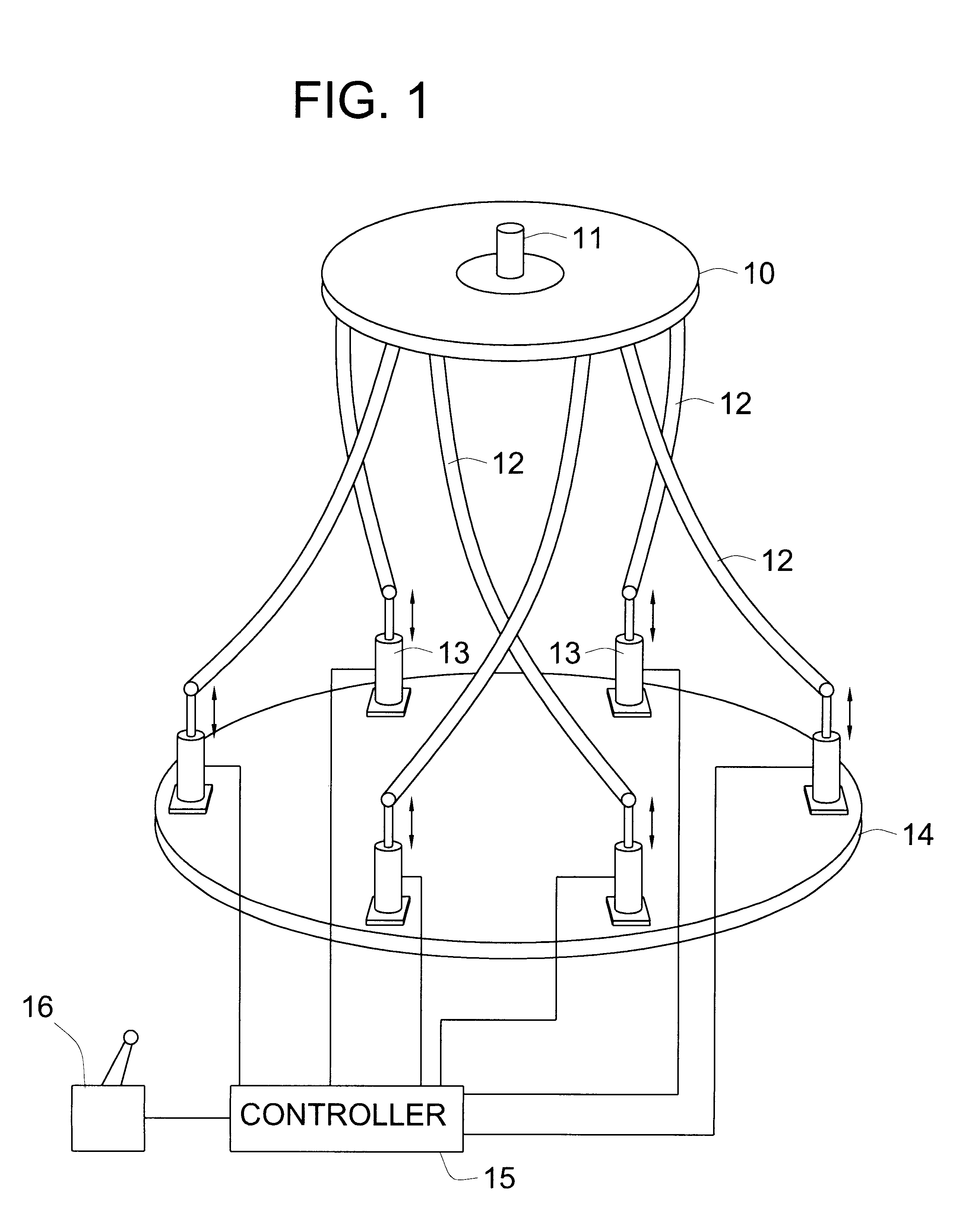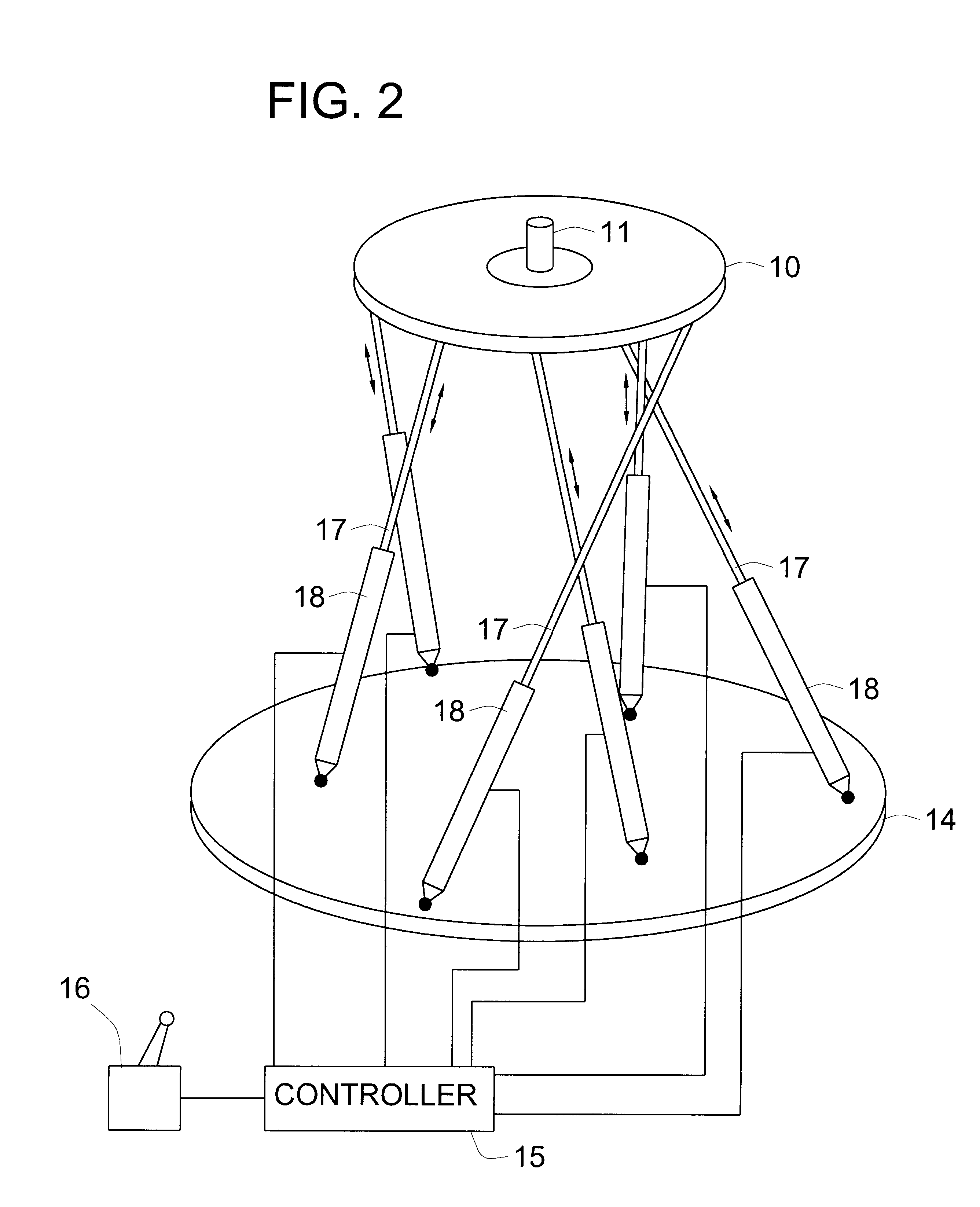Parallel mechanism
a parallel mechanism and degreeoffreedom technology, applied in the field of multi-degreeoffreedom (dof) parallel mechanisms, can solve the problems of large load being applied to the elbow and shoulder actuators, inherently plagued serial mechanisms, and compromising the overall performance of the mechanical system
- Summary
- Abstract
- Description
- Claims
- Application Information
AI Technical Summary
Benefits of technology
Problems solved by technology
Method used
Image
Examples
Embodiment Construction
FIG. 1 schematically illustrates an embodiment of a parallel mechanism according to the present invention. This embodiment includes an end platform 10 which can be used to support and manipulate a load 11, such as a tool, a sensor, a workpiece, or any other member which it is desired to support and manipulate in space. The end platform 10 is in turn supported by a plurality of links 12, each of which has a first end pivotably connected to the end platform 10 and a second end pivotably connected to an actuator 13 which is capable of translating the second end and exerting a force on the end platform 10 through the link 12. The actuators 13 are supported atop a suitable support member 14, which may be a stationary member, such as a rigid base or table, or it may be a movable member, such as a robotic arm. The actuators 13 are controlled by a controller 15 which controls the operation of the actuators 13 either autonomously to enable the mechanism to function as an autonomous robot, or...
PUM
 Login to View More
Login to View More Abstract
Description
Claims
Application Information
 Login to View More
Login to View More - R&D
- Intellectual Property
- Life Sciences
- Materials
- Tech Scout
- Unparalleled Data Quality
- Higher Quality Content
- 60% Fewer Hallucinations
Browse by: Latest US Patents, China's latest patents, Technical Efficacy Thesaurus, Application Domain, Technology Topic, Popular Technical Reports.
© 2025 PatSnap. All rights reserved.Legal|Privacy policy|Modern Slavery Act Transparency Statement|Sitemap|About US| Contact US: help@patsnap.com



